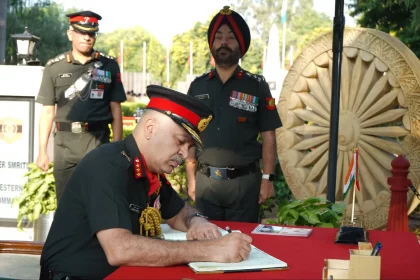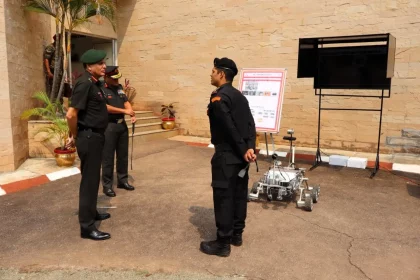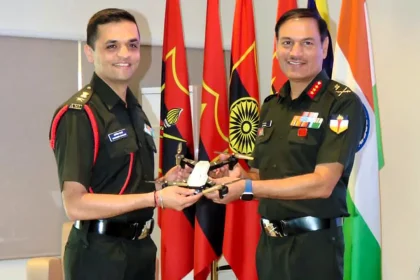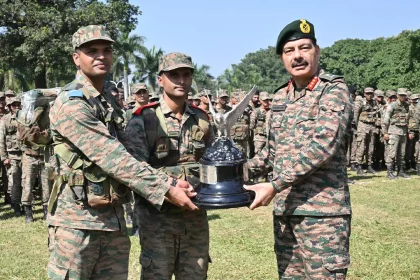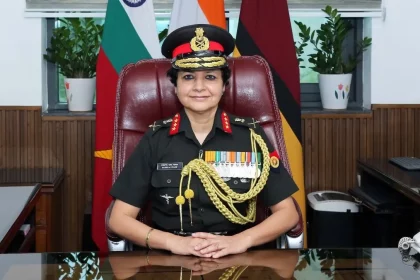Lt Gen RC Tiwari Visits Eastern Command FPV Drone Node at Agnirath Brigade
Lt Gen RC Tiwari visited the Eastern Command FPV Drone Node at Agnirath Brigade, lauding the innovative spirit and urging…
Lt Gen Puneet Ahuja Assumes Charge as Chief of Staff, HQ Western Command
Lt Gen Puneet Ahuja assumed charge as Chief of Staff, HQ Western Command from Lt Gen Mohit Wadhwa, with both…
Lt Gen Dhiraj Seth Commends ACC&S Ahilyanagar for Advancing Drone and Autonomous Systems Training
Lt Gen Dhiraj Seth commended ACC&S Ahilyanagar for its leadership in drone and autonomous systems training, urging continued innovation and…
Lt Col Abhishek Ranade Adjudged Best Student Officer as Senior Officers’ Course Concludes at ASC Centre and College, Bengaluru
Senior Officers’ Course at ASC Centre and College, Bengaluru concluded with Lt Col Abhishek Ranade named Best Student Officer and…
IMA Cadets Excel in Inter Company Obstacle Training Competition Held at Dehradun
The Inter Company Obstacle Training Competition, therefore, is not merely a sporting event it is a celebration of courage, teamwork,…
Lieutenant General Sadhna Saxena Nair Retires After 39 Years of Distinguished Service
Her retirement marks the end of an era, but her legacy will continue to inspire generations of medical professionals in…


